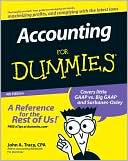Category Books
- Fiction Books & Literature
- Graphic Novels
- Horror
- Mystery & Crime
- Poetry
- Romance Books
- Science Fiction & Fantasy
- Thrillers
- Westerns
- Ages 0-2
- Ages 3-5
- Ages 6-8
- Ages 9-12
- Teens
- Children's Books
- African Americans
- Antiques & Collectibles
- Art, Architecture & Photography
- Bibles & Bible Studies
- Biography
- Business Books
- Christianity
- Computer Books & Technology Books
- Cookbooks, Food & Wine
- Crafts & Hobbies Books
- Education & Teaching
- Engineering
- Entertainment
- Foreign Languages
- Game Books
- Gay & Lesbian
- Health Books, Diet & Fitness Books
- History
- Home & Garden
- Humor Books
- Judaism & Judaica
- Law
- Medical Books
- New Age & Spirituality
- Nonfiction
- Parenting & Family
- Pets
- Philosophy
- Political Books & Current Events Books
- Psychology & Psychotherapy
- Reference
- Religion Books
- Science & Nature
- Self Improvement
- Sex & Relationships
- Social Sciences
- Sports & Adventure
- Study Guides & Test Prep
- Travel
- True Crime
- Weddings
- Women's Studies
Accounting for Dummies »

Authors: John A. Tracy CPA
ISBN-13: 9780470246009, ISBN-10: 0470246006
Format: Paperback
Publisher: Wiley, John & Sons, Incorporated
Date Published: June 2008
Edition: (Non-applicable)
Author Biography: John A. Tracy CPA
John A. Tracy (Boulder, Colorado) is Professor of Accounting, Emeritus, at the University of Colorado in Boulder. Before his 35-year tenure at Boulder, he was on the business faculty for four years at the University of California in Berkeley. Early in his career he was a staff accountant with Ernst & Young. John is the author of several books on accounting and finance, including The Fast Forward MBA in Finance, How To Read a Financial Report, and Small Business Financial Management Kit For Dummies with his son Tage Tracy. John received his BSC degree from Creighton University. He earned his MBA and PhD degrees at the University of Wisconsin in Madison. He is a CPA (inactive) in Colorado.
Book Synopsis
Learn the basics of practical accounting easily and painlessly with Accounting For Dummies, 4th Edition, which features new information on accounting methods and standards to keep you up to date. With this guide, you can avoid accounting fraud, minimize confusion, maximize profits, and make sense of accounting basics with this plain-English guide to your accountant’s language. Understand how to manage inventory, report income and expenses for public or private companies, evaluate profit margins, analyze business strengths and weaknesses, and manage budgets for a better bottom line.
Table of Contents
Introduction.
Part I: Opening the Books on Accounting.
Chapter 1: Accounting: The Language of Business, Investing, Finance, and Taxes.
Chapter 2: Financial Statements and Accounting Standards.
Chapter 3: Bookkeeping and Accounting Systems.
Part II: Figuring Out Financial Statements.
Chapter 4: Reporting Revenue, Expenses, and the Bottom Line.
Chapter 5: Reporting Assets, Liabilities, and Owners’ Equity.
Chapter 6: Reporting Cash Flows.
Chapter 7: Choosing Accounting Methods: Different Strokes for Different Folks.
Part III: Accounting in Managing a Business.
Chapter 8: Deciding the Legal Structure for a Business.
Chapter 9: Analyzing and Managing Profit.
Chapter 10: Financial Planning, Budgeting, and Control.
Chapter 11: Cost Concepts and Conundrums.
Part IV: Preparing and Using Financial Reports.
Chapter 12: Getting a Financial Report Ready for Release.
Chapter 13: How Lenders and Investors Read a Financial Report.
Chapter 14: How Business Managers Use a Financial Report.
Chapter 15: Audits and Accounting Fraud.
Part V: The Part of Tens.
Chapter 16: Ten Accounting Tips for Managers.
Chapter 17: Ten Tips for Reading a Financial Report.
Glossary: Slashing Through the Accounting Jargon Jungle.
Index.
Subjects

